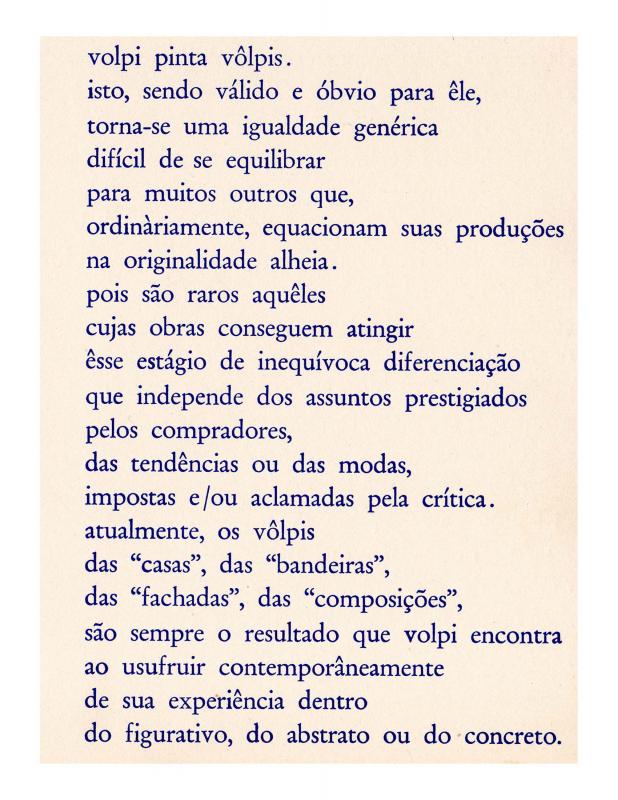The group that earned a permanent place for itself in the History of Brazilian Art under the name of Santa Helena included artists who were in the habit of spending weekends in the outlying areas of the city of São Paulo to paint en plein air. From 1934 to the mid-1940s the painters Mário Zanini, Francisco Rebolo, Manoel Martins, Fulvio Pennacchi, Aldo Bonadei, Clóvis Graciano, Alfredo Volpi, Humberto Rosa, and Alfredo Rizzotti had studios in the Palacete Santa Helena, in the heart of São Paulo. Despite this, they never banded together as a group under a specific name, although they had all taken part in the salons hosted by the FAM (Família Artística Paulista), which was described by the writer Mário de Andrade as the source of a “proletarian” style of painting.
Lourival Gomes Machado (1917–67) was a journalist, art critic, and art historian. In 1941 he joined forces with the intellectuals Antonio Candido, Paulo Emílio Salles Gomes, and Décio de Almeida Prado to produce the magazine Clima (São Paulo), whose goal was to revitalize Brazilian literary criticism, cinema, and theater. During the course of the 1940s he was the art critic at the Folha da Manhã newspaper, and the international political columnist at O Estado de S. Paulo. He then took over from Léon Degand as the director of the MAM/SP (Museu de Arte Moderna de São Paulo (1949–51). His best-known work, Barroco Mineiro (1969), is a collection of his articles that he started in 1953 in his earlier version Teorias do Barroco.
In this article Gomes Machado draws attention to “a strong popular, at times truly primitive, inquiry” into the landscape paintings of Rebolo and his colleagues in the Santa Helena group. These painters—who spanned the modernism of the 1920s to the Abstract movements of the early 1950s—sought to provoke an artistic renewal in Brazil, inspired by the fact that many of them had emigrated from Europe.
On this matter, see an article by the painter Willys de Castro about the most famous artist in that group: “Volpi pinta vôlpis” [doc. no. 1090193]. He was an artist who, despite his expert pictorial work, could blend traditional elements into his abstract pieces.

